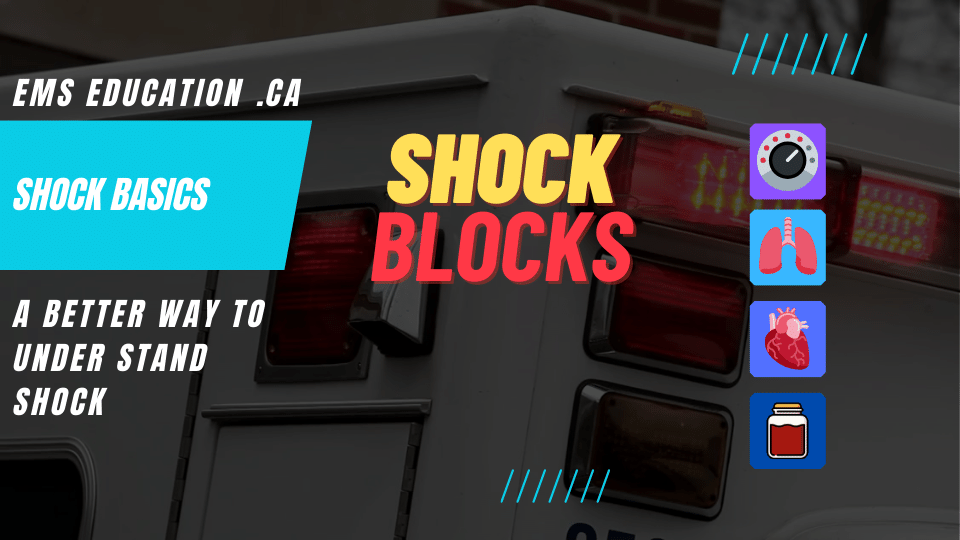Distributive shock is a critical medical condition characterized by a disruption in the body’s normal regulation of blood flow, leading to inadequate tissue perfusion. Unlike other forms of shock, such as hypovolemic or cardiogenic shock, distributive shock is primarily caused by widespread vasodilation rather than a decrease in blood volume or cardiac function. This vasodilation results in a sudden drop in blood pressure and impaired circulation, compromising the delivery of oxygen and nutrients to vital organs.
Physiopathology: The physiopathology of distributive shock involves a dysregulation of the body’s vascular tone and systemic inflammation. In conditions such as septic shock, anaphylactic shock, or neurogenic shock, various triggers, such as infection, allergens, or spinal cord injury, initiate an exaggerated immune response or disruption of autonomic nervous system control. This response leads to the release of inflammatory mediators, such as cytokines or histamine, which cause widespread vasodilation and increased vascular permeability. As a result, blood pressure drops, and blood flow becomes inefficient, leading to tissue hypoxia and organ dysfunction.
Subcategories of Distributive Shock
Physiopathology: Septic shock occurs when bacteria or other pathogens invade the bloodstream, triggering a systemic inflammatory response. This response leads to the release of cytokines, which are signaling molecules that cause widespread inflammation and vasodilation. As a result, the blood vessels become leaky and lose their ability to maintain proper blood pressure. This leads to inadequate tissue perfusion and can ultimately result in organ failure and death if not promptly treated.
Septic Shock
Signs and Symptoms:
- High fever
- Rapid heart rate (tachycardia)
- Low blood pressure (hypotension)
- Cold, clammy skin
- Confusion or altered mental status
- Decreased urine output
Treatment:
- Prompt administration of broad-spectrum antibiotics to target the underlying infection
- Aggressive fluid resuscitation to restore intravascular volume and improve tissue perfusion
- Vasopressor therapy to support blood pressure and counteract the vasodilation
- Source control measures, such as draining abscesses or removing infected tissue, to eliminate the source of infection and prevent further spread
- Always follow your local protocol
Anaphylactic Shock
Physiopathology: Anaphylactic shock occurs when the body has an extreme allergic reaction to a particular substance, such as food, medication, or insect venom. When exposed to the allergen, the immune system releases a flood of chemicals, including histamine, which causes widespread vasodilation and increased permeability of blood vessels. This leads to a rapid drop in blood pressure and impaired tissue perfusion throughout the body. Additionally, bronchoconstriction can occur, leading to difficulty breathing and potentially life-threatening respiratory distress.
Signs and Symptoms:
- Skin rash or hives
- Swelling of the face, lips, or throat
- Difficulty breathing or wheezing
- Rapid heart rate (tachycardia)
- Low blood pressure (hypotension)
- Nausea, vomiting, or diarrhea
Treatment:
- Immediate administration of epinephrine via auto-injector or intramuscular injection to counteract the allergic reaction
- Airway management, including supplemental oxygen and, if necessary, advanced airway support
- Aggressive fluid resuscitation to support blood pressure and improve tissue perfusion
- Administration of antihistamines and corticosteroids to reduce allergic symptoms and inflammation
- Always follow you local protocol
Neurogenic Shock
Physiopathology: Neurogenic shock occurs as a result of a disruption in the normal function of the autonomic nervous system, typically following a spinal cord injury or severe head trauma. When the spinal cord is damaged, it can interfere with the sympathetic nervous system’s ability to regulate blood vessel tone and heart rate. This disruption leads to widespread vasodilation, causing a sudden drop in blood pressure and decreased systemic vascular resistance. As a result, blood pools in the veins rather than circulating properly, leading to inadequate tissue perfusion and potential organ dysfunction.
Signs and Symptoms:
- Hypotension (low blood pressure)
- Bradycardia (slow heart rate)
- Warm and dry skin
- Absence of signs of sympathetic activity (such as sweating or goosebumps)
- Altered mental status or loss of consciousness
Treatment:
- Spinal precautions and immobilization to prevent further injury to the spinal cord
- Aggressive fluid resuscitation to maintain perfusion pressure and improve circulation
- Administration of vasopressor medications, such as dopamine or norepinephrine, to support blood pressure and counteract vasodilation
- Continuous monitoring of vital signs and neurological status for signs of deterioration or improvement
- Always follow your local protocol
In conclusion, distributive shock is a serious medical emergency characterized by a disruption in the body’s vascular tone regulation, leading to inadequate tissue perfusion. Prompt recognition and intervention are crucial in the prehospital setting to prevent further deterioration and improve patient outcomes. By understanding the physiopathology and anatomy of distributive shock, emergency medical responders can effectively recognize the signs and symptoms and initiate appropriate treatment strategies.
It is essential for emergency medical responders to prioritize early identification of distributive shock and to implement timely interventions aimed at addressing the underlying cause and restoring adequate tissue perfusion. This may include aggressive fluid resuscitation, vasopressor therapy, and airway management to support respiratory function. Continuous monitoring of vital signs and reassessment of treatment response are vital aspects of patient care in distributive shock. Through ongoing education and training, emergency medical responders can enhance their skills and preparedness to effectively manage distributive shock in the prehospital setting.

Shock Block is a better way to understand shock. Shock Blocks will not only help you the physiology of shock it will help you understand priorities treatment.
